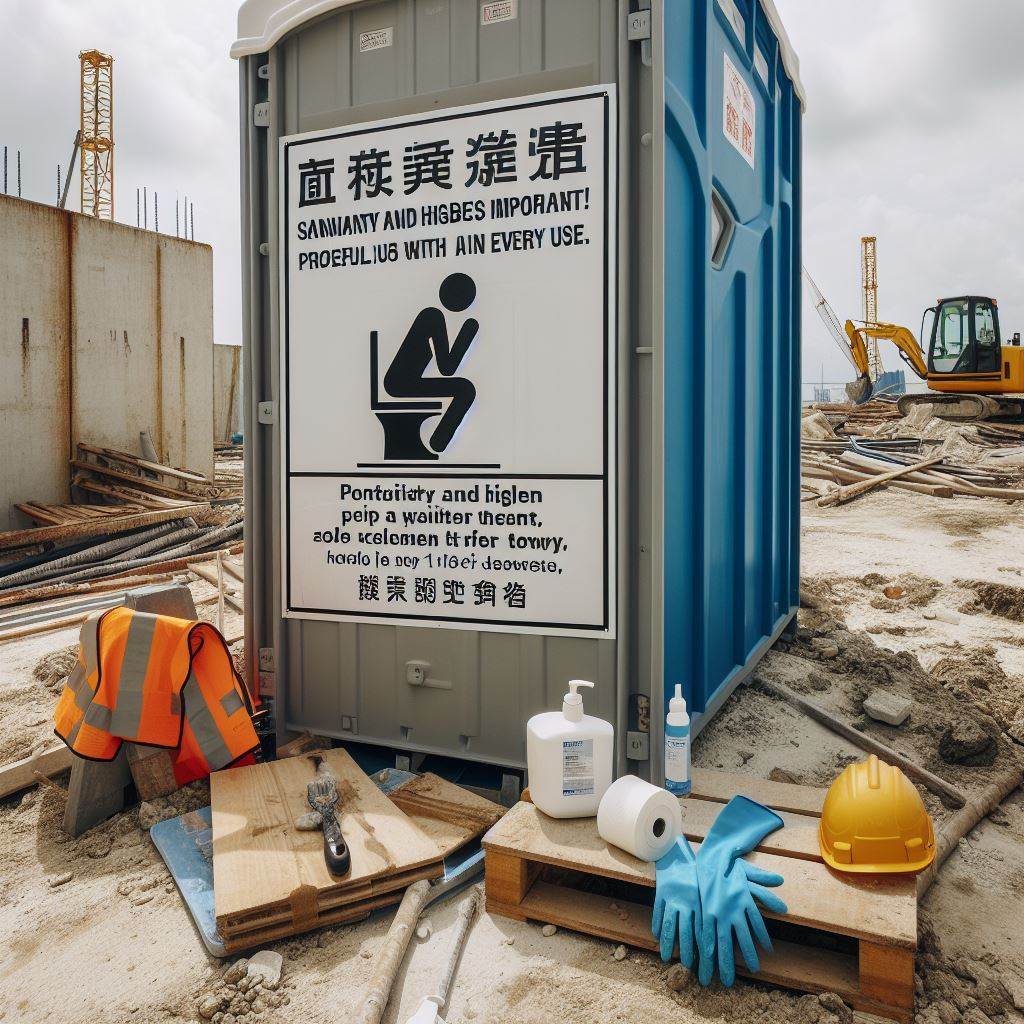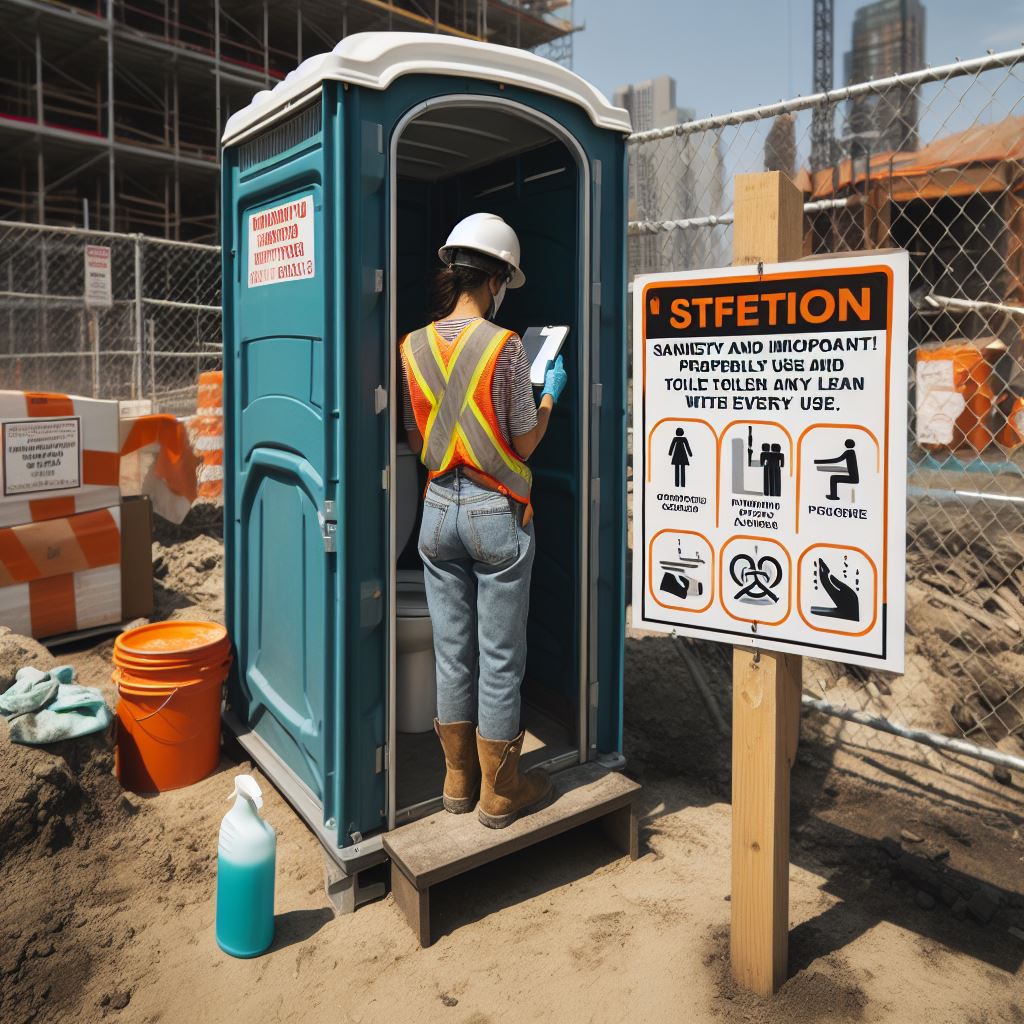Maintaining a clean and hygienic environment on any site, be it for construction, a significant event, or a temporary gathering, is not just important—it’s necessary. When permanent restrooms are out of reach, portable toilet rentals safeguard health and keep your site functional.
Good sanitation is the backbone of health and safety at any temporary site. Picture a bustling construction zone or a vibrant outdoor festival—now, imagine it without proper facilities. It doesn’t work. That’s why portable toilet rentals are more than just a convenience; they’re a linchpin of site management. Ensuring everyone has access to clean, well-maintained toilets translates to fewer health risks and a more efficient, productive environment.
A few key players come to mind when you think about site sanitation. There are the portable toilets themselves, the essential handwashing stations, and the all-important maintenance services that keep them in top shape. These entities are the heroes of keeping sites hygienic and compliant with public health standards.
Before going into the details, we encounter micro-semantic entities like environmental standards and waste management—critical factors influencing the choice of portable toilet rentals. These considerations help ensure that your site follows the rules and upholds best practices in sustainability and cleanliness.

Table of Contents
Assessing the Need of Portable Toilet Sanitation on the Construction Site
Before bringing portable toilets to your site, it’s wise to think about what you need. Just like you wouldn’t buy a (two-seater tent) for a family camping trip, you want to use only a few or too many portable toilets for your site.
Evaluating Sanitation Requirements for Different Site Sizes
Every site is unique. The number of portable toilets you’ll need depends on how many people are there and how long they’ll stay. It’s a bit like planning a party—you’ve got to make sure everyone’s comfortable and that there are enough facilities.
Entities to Use in Portable Toilet Rental
Consider the crowd size, event duration, and the type of work happening on-site. You’re not just renting a product; you’re ensuring a service—portable bathroom services that cater to your specific site’s needs.
Micro semantic Entities for Sanitation Assessment
Dive deep into the specifics. Look at factors like peak hours, the number of workers, and legal requirements. These are the building blocks of temporary toilet maintenance—ensuring your facilities are always up to par.
Choosing the Right Portable Toilet Model
Picking the correct type of portable toilet is like choosing the right (tool for a job). You want to make sure it fits the site and makes everyone happy.
Options and Features in Portable Toilet Rentals
Portable toilets come in all shapes and sizes. Some are basic, while others have extra features like handwashing stations and lights. Consider your needs—do you want something simple or more like a (luxury restroom trailer) for a VIP experience?
Entities to Use in Selecting Portable Toilets
The model you choose should be based on the comfort and convenience of your users. From construction hygiene solutions to luxury options for special events, a range fits every need.
Look at the finer details, like if you need ADA-compliant units or environmentally friendly options. These aren’t just perks but essential to providing hygienic portable restrooms.
Quantity and Placement Strategy
Figuring out how many portable toilets you need and where to put them is like setting up a (board game) on game night. You need the correct number of pieces in the right places to ensure the game goes smoothly.
Determining the Number and Location of Portable Toilets
This is where you play detective. You’ll need to figure out the layout of your site and where people gather the most. It’s all about accessibility and convenience—ensuring no one has to go on a long trek just to find a restroom.
Entities to Use in Placement Strategy
Think about your site’s terrain, traffic flow, and how people move around. Your goal is to place portable toilets in spots that are easy to get to without causing a disruption.
Fine-tune your strategy by considering the peak times people use the toilets and how service trucks will access them. This is key to streamlining construction site sanitation and running your site like a well-oiled machine.
Quantity and Placement Strategy
Setting up portable toilets is much like planning where to put food stands or tools on a construction site or where to put them at a festival. It would help if you put them where they’ll be easy to use without getting in the way of the work.
Determining the Number and Location of Portable Toilets
Think about how many people you’ll have at your site. A good rule of thumb is to have at least one toilet for every 50 people. But think about more than just the number; where people work or hang out. You want to put the toilets close enough so people can get to them quickly but not so close that they’re a distraction. Remember, good job site sanitation keeps people focused and happy.
Entities to Use in Placement Strategy
You must look at your site like a map and determine the best spots for your portable toilets. Consider things like how the ground slopes, where the busiest spots are, and how easy it is for service trucks to get to the toilets for cleaning. Getting this right is a big part of portable sanitation services.
It’s the small details that can make a big difference. Think about when the toilets will be used the most during the day and plan for that. Make sure they’re placed in well-lit areas for night-time events or construction. These details make for hygienic portable restrooms that people want to use.
Sanitation and Hygiene Best Practices
When you’ve got portable toilets on your site, you’ve got a responsibility. It’s not just about having them there; it’s about keeping them clean and safe for everyone. Here’s how you make sure your mobile restrooms stay top-notch.
Maintaining Hygiene Standards with Portable Toilets
First off, cleanliness is critical. You want everyone to feel comfortable using the portable toilets, which means cleaning them regularly. Set a schedule—like how a school might clean its cafeteria—and stick to it. Use the right cleaning supplies that get the job done and are safe for the environment, too.
Best Practices for Keeping Portable Toilets Clean
You can do a few things to keep those portable toilets in good shape. Always have enough toilet paper and stocked hand sanitizer, and ensure a way to dry hands. Just like in a (public restroom), these basics go a long way in maintaining mobile restroom hygiene.
Entities to Use for Upkeep
Think about what makes a restroom pleasant. You want it to be free of smells, well-stocked, and in good repair. That means using deodorizers, ensuring locks work, and keeping the interior dry. All of this is part of good temporary toilet maintenance.
The devil’s in the details, as they say. Small things like checking that the soap never runs out and the lights always work make a huge difference. These touches show that you care about on-site waste management and the comfort of your users.
Remember, good Sanitation isn’t just about following rules. It’s about showing that you respect the people on your site and care about their health and comfort. Stick to these best practices, and you’ll be all set.
Integrating Handwashing Facilities
Keeping hands clean is one of the most important steps to avoid getting sick and spreading germs to others. That’s why having handwashing stations at your site is just as crucial as having portable toilets. Let’s dive into how to prioritize hand hygiene at your location.
The Importance of Handwashing Stations
More than just just just having a portable toilet is required. It would help if you had a place where people could wash their hands after they use the toilet, especially before eating or touching their face. Adding handwashing stations is a simple move that shows you’re serious about job site sanitation and the well-being of everyone on your site.
Entities to Use in Handwashing Integration
When setting up your handwashing station, you need running water, soap, and something to dry your hands with. Consider adding hand sanitizer as a backup. These are all part of maintaining mobile restroom hygiene and keeping your site up to code.
Pay attention to the small but mighty details, like ensuring a constant supply of soap and using paper towels or hand dryers that work reliably. These little things can make a big difference in on-site waste management and hygiene.
Logistics and Setup Considerations
When you plan, you’re to bring portable toilets to your site, there’s more to consider than just ordering them. It would help if you planned how they’ll get there, where they’ll go, and when they’ll leave. This is about making sure the whole process is smooth from start to finish.
Planning for Delivery, Setup, and Removal
Getting portable toilets delivered and set up is like ensuring everyone gets their food on time at a big event. You need to work out the best route for the delivery trucks and the right spots for the toilets to sit. And when your event or project is done, you have to have a plan for them to be taken away without any trouble.
Entities to Use in Logistics Planning
Think about your site like a chessboard. You want your pieces – the portable toilets – where they will be most beneficial. It would help to consider how the delivery and service trucks will get to them without disturbing your work.
The details matter. Ensure there’s a clear path for the trucks and the toilets are set up on level ground. And remember things like making sure they’re lit up if people will be using them at night.
Dealing with Waste and Environmental Concerns
Managing waste and caring for the environment are big deals when you’re running a site. Portable toilets are a smart choice because they help handle both things well.
Eco-friendly Waste Management Solutions
Using portable toilets is already a step in the right direction for the environment. They use less water than regular toilets; if you choose, you can use eco-friendly chemicals that are kinder to the Earth. It’s like picking a reusable water bottle over a disposable one – a small choice with a significant impact.
Environmental Impact of Portable Toilets
Portable toilets seem simple, but they have a pretty good story to tell regarding the environment. They’re designed to handle waste in a way that reduces harm to the planet. Plus, they can be moved and reused, which cuts down on the need to build more bathrooms than we need.
Maintenance and Servicing of Portable Toilets
Keeping portable toilets working well is as important as having them on your site. They need regular checks, just like a car needs its oil changed, to make sure they’re always ready for people to use.
Ensuring Regular Service and Maintenance
A big part of portable toilet upkeep is setting up a regular service schedule. This means someone comes out to clean them, refill supplies like soap and paper, and check that everything’s working. Regular service stops minor problems from becoming big ones.
Best Practices for Service and Maintenance
Good upkeep practices are all about staying ahead of the game. Keep a list of what needs to be done and when, and ensure you have an excellent team to do the work. Using quality cleaning products and keeping up with repairs will make sure your portable toilets are always in tip-top shape.
Conclusion: Benefits of Streamlined Sanitation
Getting sanitation right with portable toilets is more than just making people comfortable. It’s about keeping them healthy, improving your site, and looking after the environment.
Ultimately, having a good portable toilet setup means everyone’s happier and healthier. Workers or guests can focus on what they came to do instead of worrying about where to go when nature calls. And by handling waste well and keeping everything clean, you’re doing your bit for the planet, too.
Portable toilets are a simple solution, but they bring many benefits to any site. They’re part of a bigger picture – one where we simultaneously take care of our people and environment.




